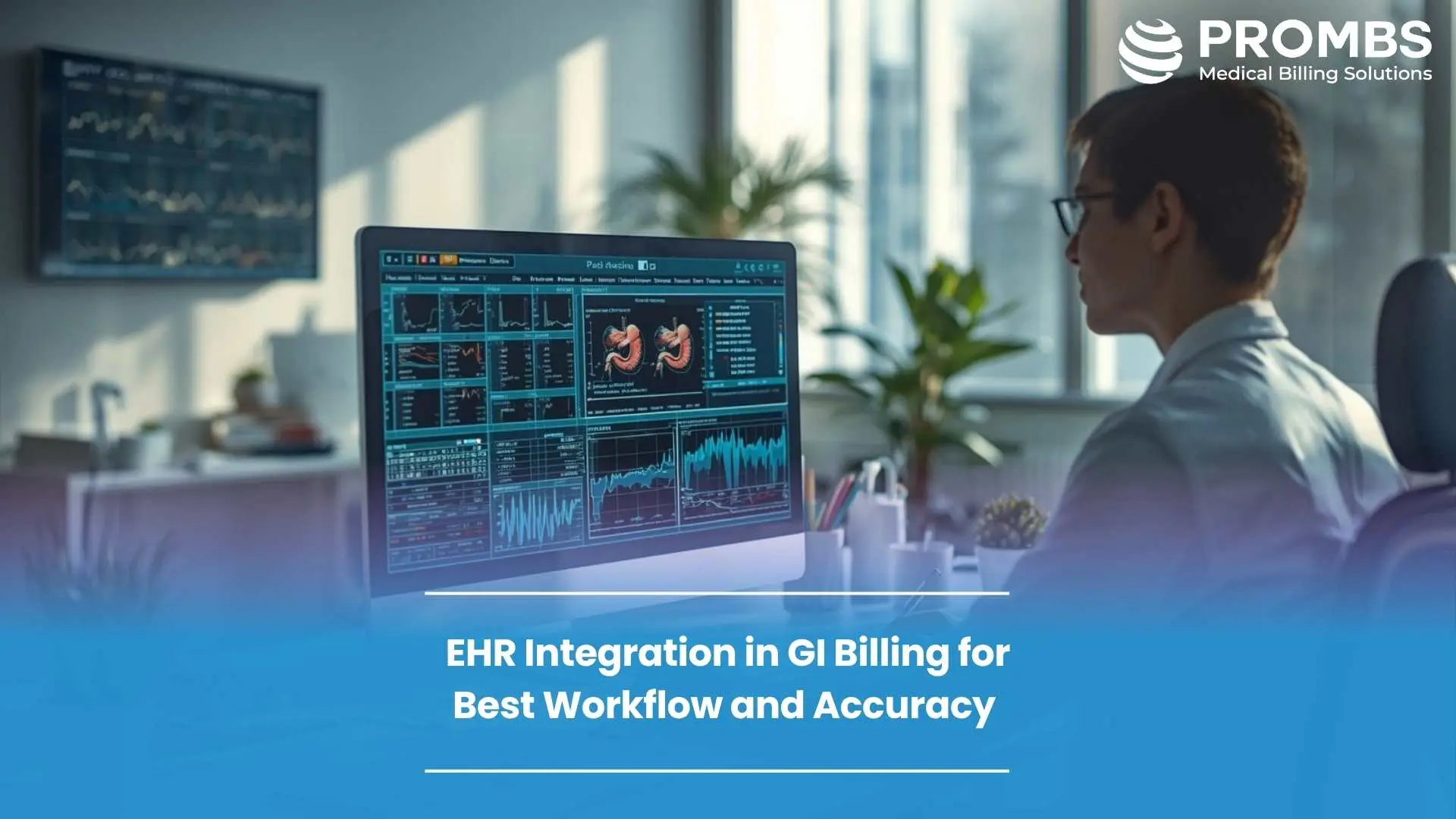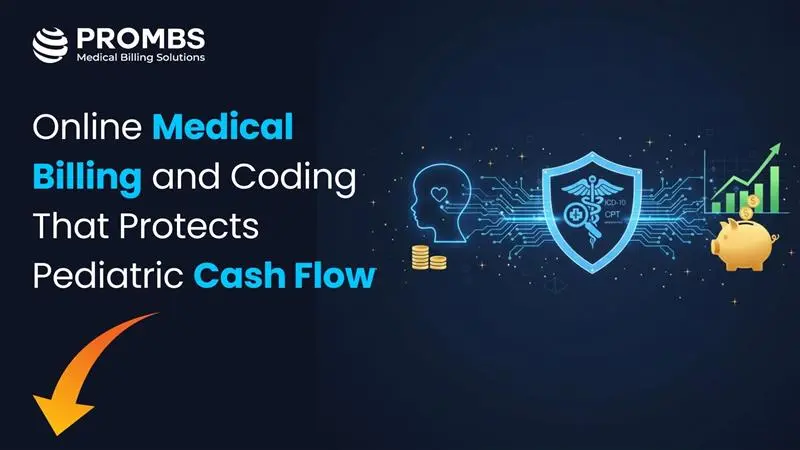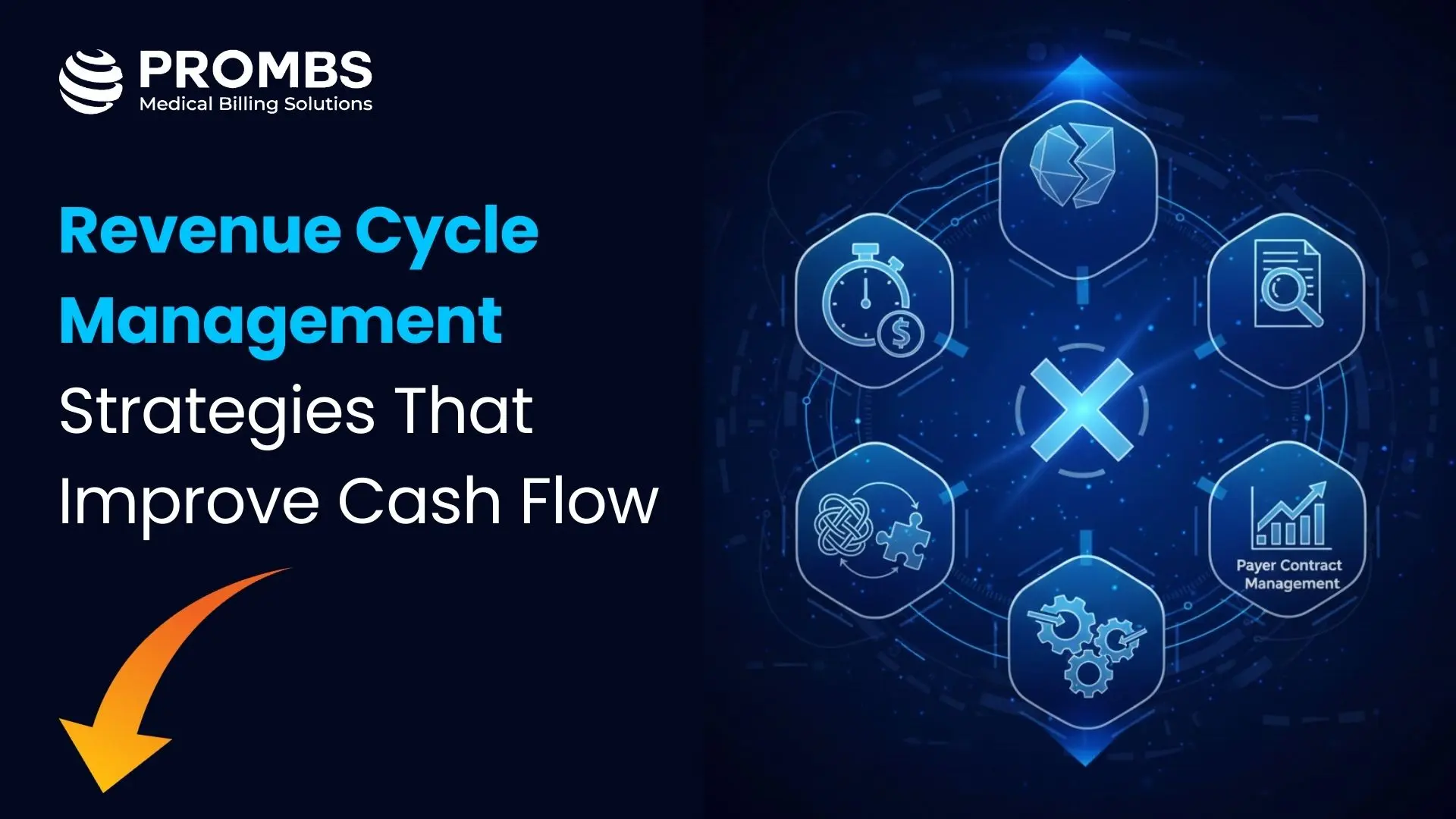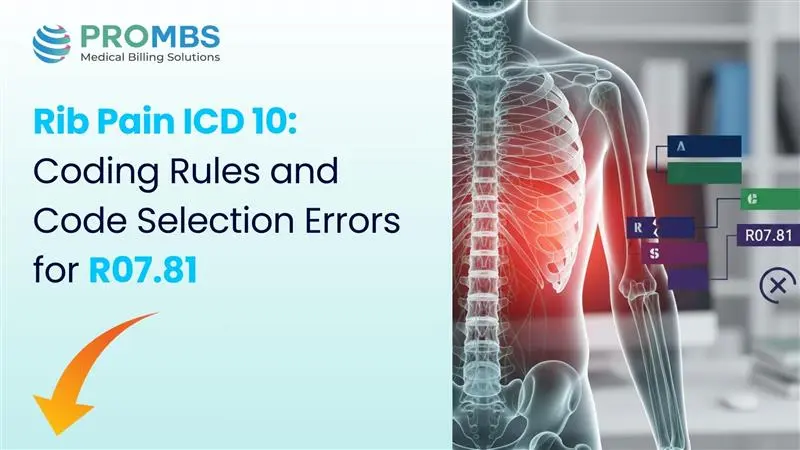EHR Integration in GI Billing is one of the most effective ways to improve accuracy and cash flow in gastroenterology practices. When your electronic health record (EHR) system doesn’t connect properly with your GI billing software, small gaps can lead to big problems. Missed charges, delayed claims, and coding errors all add up to lost revenue and extra stress for your staff.
Honestly, a well-designed integration keeps everything connected. It links procedure notes, diagnostic codes, and billing data automatically. This connection reduces manual entry, speeds up claim submission, and ensures consistent documentation. According to a 2024 MGMA report, practices that improved EHR integration saw a 25% drop in claim rework and faster reimbursement cycles.
Understanding the Role of EHR in Gastroenterology Billing
Electronic Health Record (EHR) systems play a much bigger role in gastroenterology billing than many realize. They don’t just store patient charts or track visit histories. They capture every clinical detail that drives the billing process, including procedure notes, diagnosis codes, pathology results, and physician documentation. When these records are accurate and well-organized, your billing system can generate clean claims without extra effort.
Proper EHR Integration in GI Billing ensures this flow happens automatically. Instead of staff manually transferring data, the EHR communicates directly with the billing platform. Every note, test result, and code moves securely into the billing system in real time. This connection reduces human error, shortens claim cycles, and supports better compliance with payer and regulatory rules.
When both systems work in sync, your team spends less time retyping data and more time managing claims and patient care. It also improves GI billing compliance by making sure the clinical documentation always matches what is billed. This level of integration helps prevent denials caused by missing modifiers, mismatched codes, or incomplete procedure details. According to the Office of the National Coordinator for Health IT (ONC), practices with strong EHR and billing interoperability spend nearly 20% less time on documentation. That means more time focused on patient outcomes, fewer backlogs, and a smoother workflow across the entire revenue cycle.
What are the Benefits of EHR Integration in GI Billing?
When your EHR and billing systems work together seamlessly, everything becomes easier from documentation to reimbursements. Integrated systems eliminate the need for manual data entry, reduce duplicate work, and ensure every diagnosis and procedure is coded correctly. This connection helps your team submit cleaner claims, minimize denials, and speed up payments. For gastroenterology practices, this means fewer billing headaches, faster revenue cycles, and more time to focus on patient care instead of paperwork.
Beyond efficiency, EHR integration also builds accuracy and transparency. Every clinical note, test result, and modifier flows directly into the billing system in real time. This reduces compliance risks and strengthens payer trust by ensuring that the data you submit perfectly matches what’s documented. Practices that achieve full integration often see measurable improvements in both claim turnaround and financial performance, proving that technology and teamwork together make the GI billing process smarter, faster, and more reliable.
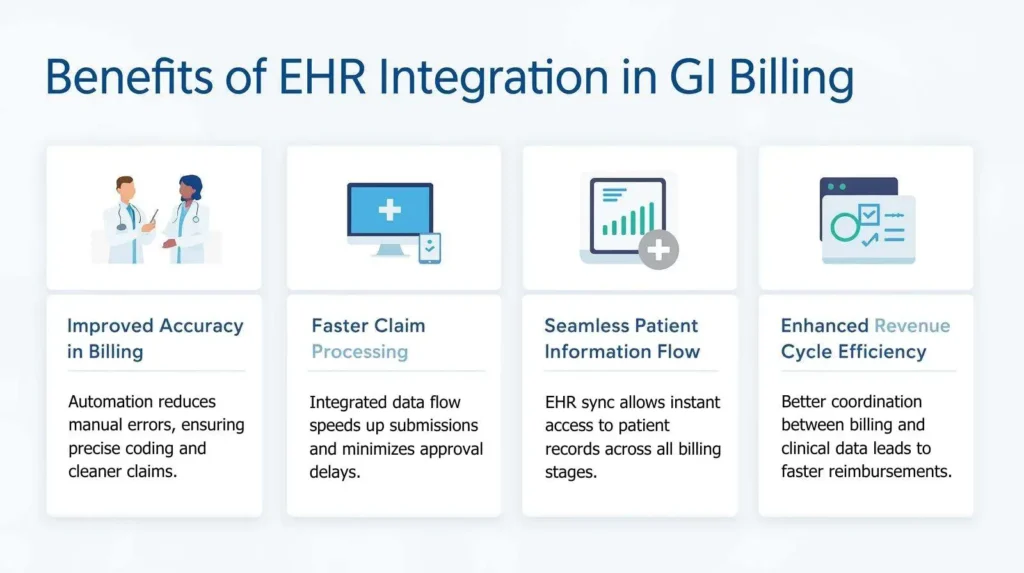
Common Integration Challenges Between EHR and Billing Systems
Even with advanced software, many gastroenterology practices still struggle to connect their EHR and billing systems effectively. The problem usually isn’t the tools themselves but the lack of proper communication between them. When these systems don’t exchange data correctly, key information such as procedure details, diagnosis codes, or modifiers can be lost or distorted. This often leads to billing errors that slow down payments and frustrate both staff and patients.
A weak integration can create ripple effects across the entire billing process. Claims may be delayed, charges can go unrecorded, and documentation might not match the billed services. Over time, these gaps hurt cash flow and increase compliance risks. Practices using different EHR and billing vendors face even more challenges, as inconsistent data formats and mapping issues make automation harder. Without proper alignment, staff end up spending extra time on manual corrections instead of managing claims efficiently.
| Challenge | What Happens | Why It Matters |
|---|---|---|
| Data Mapping Errors | Information doesn’t transfer correctly between systems. | Leads to missing or incorrect claim details. |
| Delayed Charge Capture | Charges remain stuck in the EHR. | Causes missed revenue and delayed payments. |
| Coding Mismatch | Procedure notes and billing codes don’t align. | Results in denials and compliance issues. |
| Limited Interoperability | Systems can’t communicate effectively. | Increases manual entry and staff workload. |
Research from the Healthcare Financial Management Association (HFMA) shows that over 60% of practices experience claim delays due to weak integration. Improving GI billing data management can eliminate these issues and strengthen your revenue cycle
How Can You Improve EHR and RCM Workflow Alignment?
To streamline your GI billing workflow, both your EHR and revenue cycle management (RCM) systems must be in sync. Here are key strategies to make that happen.
Automate Data Flow
Set your EHR to share billing data automatically using secure APIs or direct system connections. This eliminates the need for manual data transfers, which are often time-consuming and prone to error. When automation is in place, procedure notes, diagnosis codes, and patient details move instantly to the billing system without extra steps. This not only speeds up claim submission but also ensures greater accuracy across your GI billing workflow. According to the American Health Information Management Association (AHIMA), automation can reduce billing errors by up to 30%, saving valuable time and resources.
Use Standardized Templates
Create detailed, standardized templates for your most common gastroenterology procedures, such as colonoscopies, endoscopies, and biopsies. These templates ensure every required field is captured consistently, from pre-procedure notes to follow-up care. By using uniform documentation, you help your billing team assign the correct CPT and ICD-10 codes every time. This small adjustment can significantly improve coding accuracy, reduce denials, and strengthen compliance with payer requirements.
Review and Audit Regularly
Make regular audits part of your monthly routine. Even with a well-integrated system, small data errors can slip through and build up over time. Reviewing claims, charge captures, and coding patterns helps you catch gaps before they affect your reimbursements. Consistent auditing also provides insights into workflow performance, helping you fine-tune your GI billing workflow optimization process for better financial results.
Train Your Team
Best Practices for Data Accuracy, Coding, and Compliance
Accurate data and proper coding are the backbone of successful GI billing. Even one missing modifier can cause payment delays. Strong EHR Integration in GI Billing helps ensure that every claim reflects what actually happened during a procedure.
Link each CPT and ICD-10 code to your provider notes to support billing accuracy. Keep your team updated on payer guidelines from the Centers for Medicare & Medicaid Services (CMS) to stay compliant.
Enable EHR validation tools to flag missing or invalid data before submission. CMS data shows that about 12% of denials stem from incomplete documentation, and most can be prevented with solid validation and consistent workflows.
How Pro-MBS Helps Streamline EHR Integration for GI Practices?
At Pro-MBS, we know gastroenterology billing can be complex and time-consuming. Our goal is to help practices simplify their workflow and keep their billing process accurate from start to finish. We look at how your EHR and billing systems connect, find the weak spots that slow things down, and fix them with smarter integration and automation.
Our services focus on practical solutions that make a real difference:
- Custom EHR and billing integration setup that connects data, charge capture, and reporting so your team can work faster and make fewer mistakes.
- Ongoing revenue cycle support and staff training to keep documentation clear, claims clean, and your practice compliant with payer rules.
With Pro-MBS, you get a smoother billing process and better visibility into how your revenue cycle performs. Most of our clients see fewer denials, faster payments, and a noticeable drop in administrative work within a few months.
Frequently Asked Questions (FAQs)
How does EHR improve workflow?
EHR integration in GI billing improves workflow by automating data sharing, reducing manual entry, and ensuring accurate documentation for faster, cleaner claim processing.
Do EHRs facilitate more efficient billing?
Yes, EHRs make billing more efficient by connecting clinical data directly to the billing system, minimizing errors and speeding up reimbursements.
What is the EHR integration process?
The EHR integration process links your electronic health record with the billing platform to share patient data, codes, and procedure details in real time for accurate claims.
What are the three types of EHRs?
The three types of EHRs are cloud-based, on-premise, and hybrid systems, each designed to store and manage patient and billing data securely.
What are 5 common functions of EHR systems?
The five common functions of EHR systems include patient data management, documentation, e-prescribing, billing integration, and reporting.
What does EHR integration mean?
EHR integration means connecting your EHR system with GI billing software to ensure seamless data flow, accurate coding, and faster claim submission.
What does EHR stand for?
EHR stands for Electronic Health Record, a digital system that stores patient and clinical information used in billing and care coordination.
Is EHR a CRM software?
No, EHR is not a CRM software. It focuses on patient care and billing documentation, while CRM systems manage customer relationships and communications.
